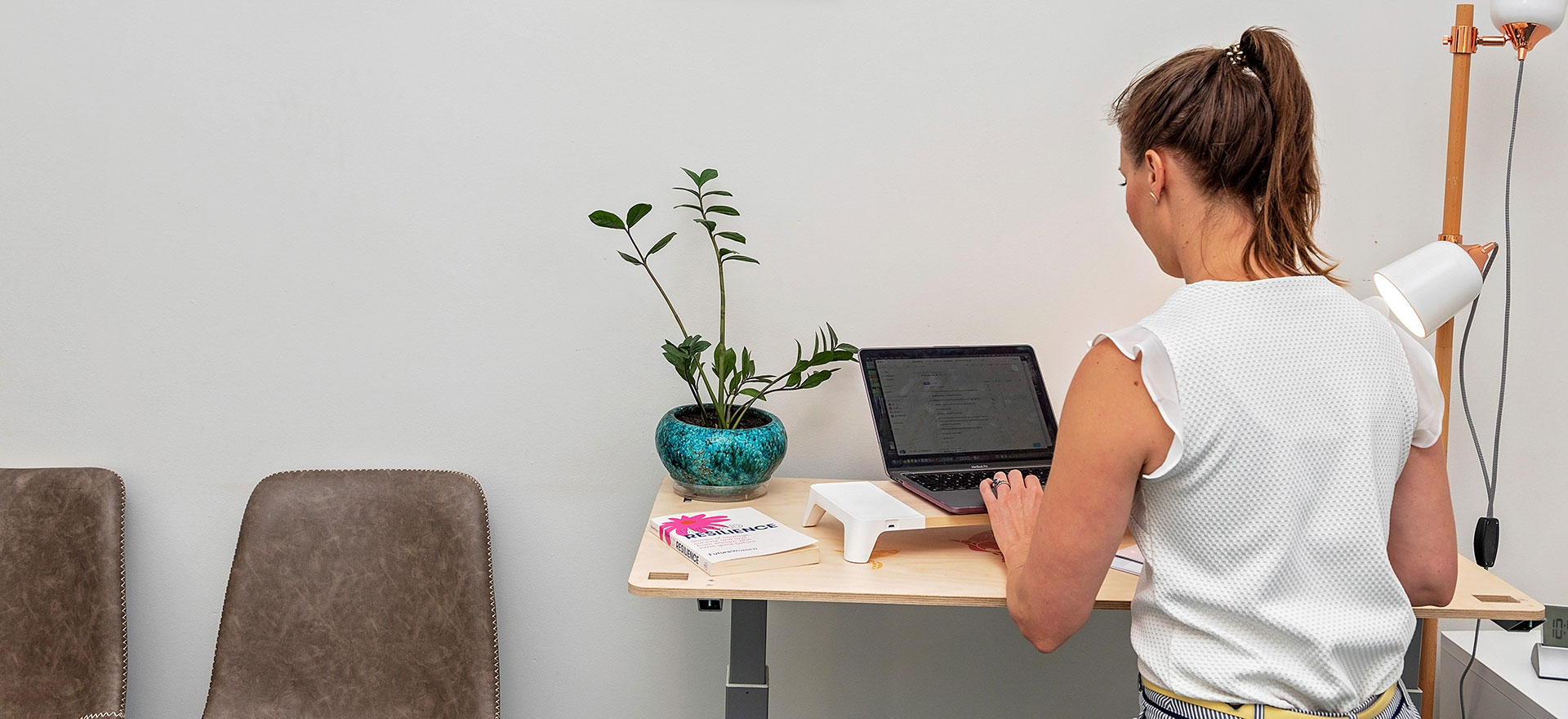Getting To the CENTER of CORE
Written By Our Resilient Health Osteopath Dr Mel Pierlot.
Contrary to popular belief, the core is not just the ‘6 pack’ muscle!
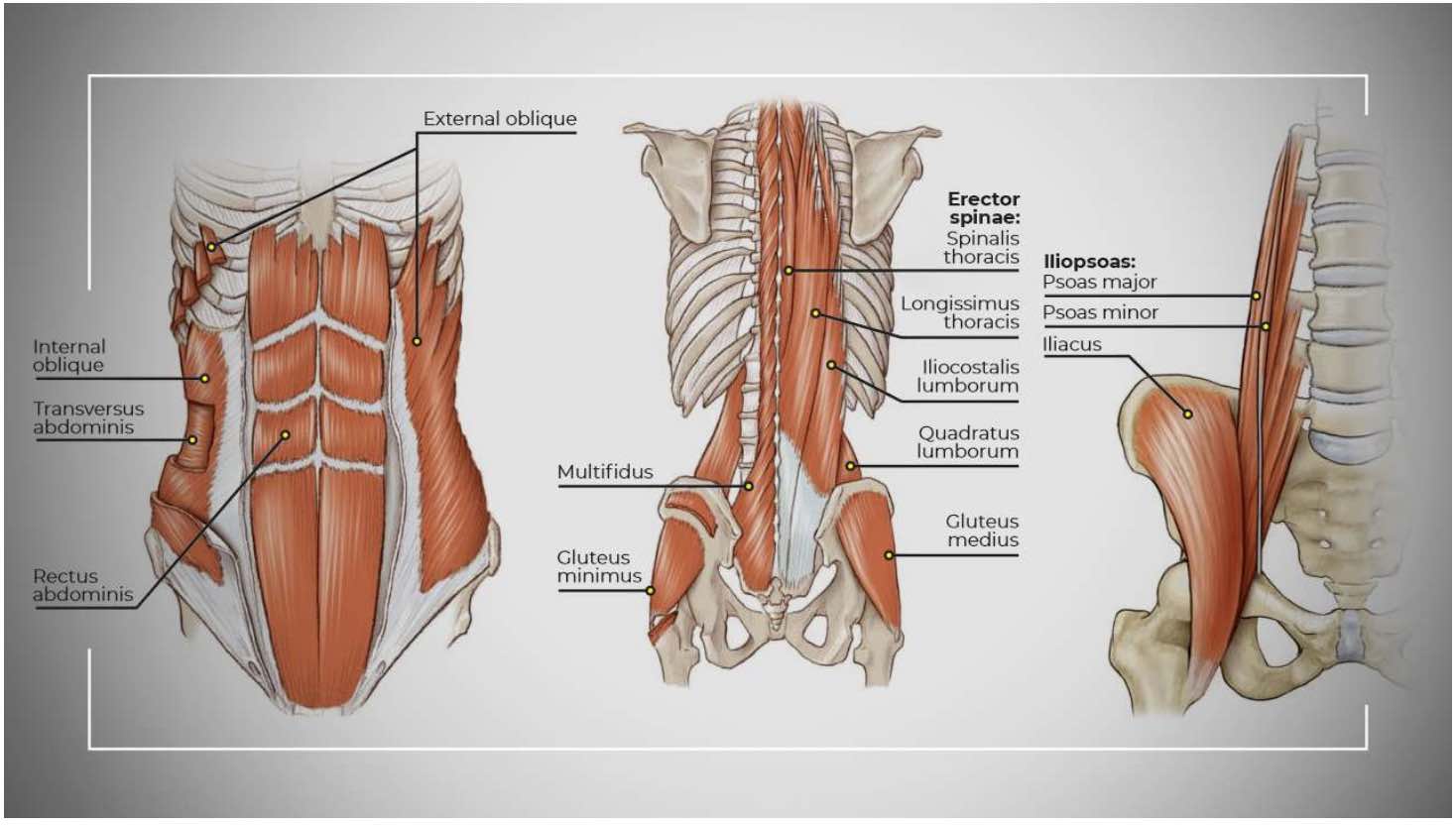
The core is a system of muscles that work together to stabilise the body. Core strength isn’t about how many sit ups you can do or how toned your abdomen is, core strength is the subtle art of maintaining the body in an ideal position against the everyday forces acting upon your body, including but not limited to, gravity AND the tasks we ask it to do everyday!
The core includes:
Diaphragm
Deep spinal muscles (including the neck)
Abdominal muscles (including the obliques)
Pelvic floor
Glute muscles
Latissimus dorsi
Trapezius
The core muscles allow your body to become rigid, so that you can lift heavy objects, safely transfer load in your body, and do trivial tasks (e.g. vacuuming or sit to stand) without injury.
Imagine trying to throw a ball while you are sitting in a kayak in the middle of the lake. Now imagine trying to throw that same ball while sitting on solid ground. See how much easier it is to generate power when you have a solid base? This is what our core does! The core muscles provide our body with a solid foundation so that it can produce effective movement with ease.
The core also helps us offload and offset the stressors we put through our body! By activating the core, we can take the pressure off of our joints and share it across the whole body.
When do I need to activate my core?
The purpose of the core is to give stability to a part of the body- this means that the parts of the core that need to be activated will vary depending on the task at hand. Any muscle activation movement or "task" requires the involvement and recruitment of the whole body: “focus on the task and let the body organise the rest” - so this blog is here to help you to become aware of the more central muscles of the WHOLE of you.
Our bodies work like a network in movement, once that is constantly monitored by our memory of movement experiences, so it can constantly adapt and learn. So, there is no need to maximally engage all of your core muscles when performing a basic everyday task, however, lifting a heavy object will require involvement of all muscles. However, if you think something is going to be light or heavy, your brain will adapt. We use this knowledge to help us gently prepare our bodies for lifts correctly so it is in a position to adapt to information, say as we lift something that was lighter than we expected... or heavier!
People with injuries may find that activating the whole core, or ‘bracing’, will help offload the injured part of the body when moving.
How do I activate my core?
There are many different ways to activate your core and target the different parts of it. Here are a few described below:
Deep core muscles ALL IN!
This is bracing/activation of all of the core muscles listed above.
Squeeze your glutes, take a deep breath in and tense your body as if you’re about to be punched in the stomach- this is a brace! People with acute low back pain may find this bracing helpful when performing everyday tasks, (like getting in and out of the car).
Pelvic Floor
Activate by imaging you are gently drawing these muscles upwards to your belly button, or stopping a wee.
Avoid holding your breath, clenching your thighs or buttocks!
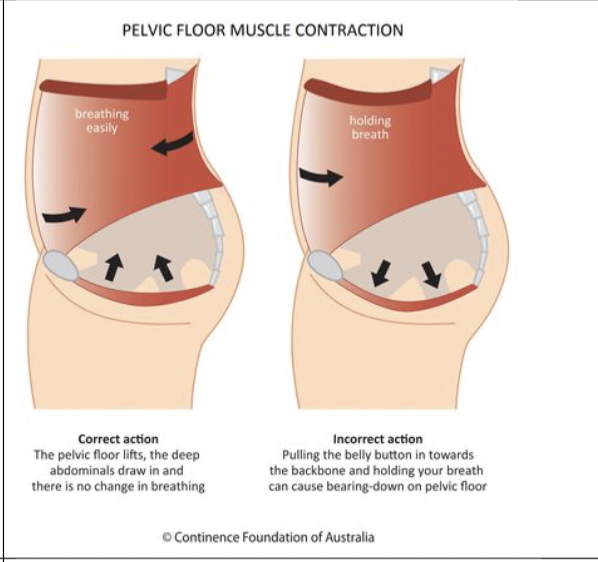
Deep spinal muscles
Bird dog: From a kneeling position, alternate lifting opposite arm and opposite leg at the same time. Try to keep your torso and pelvis as still as possible.
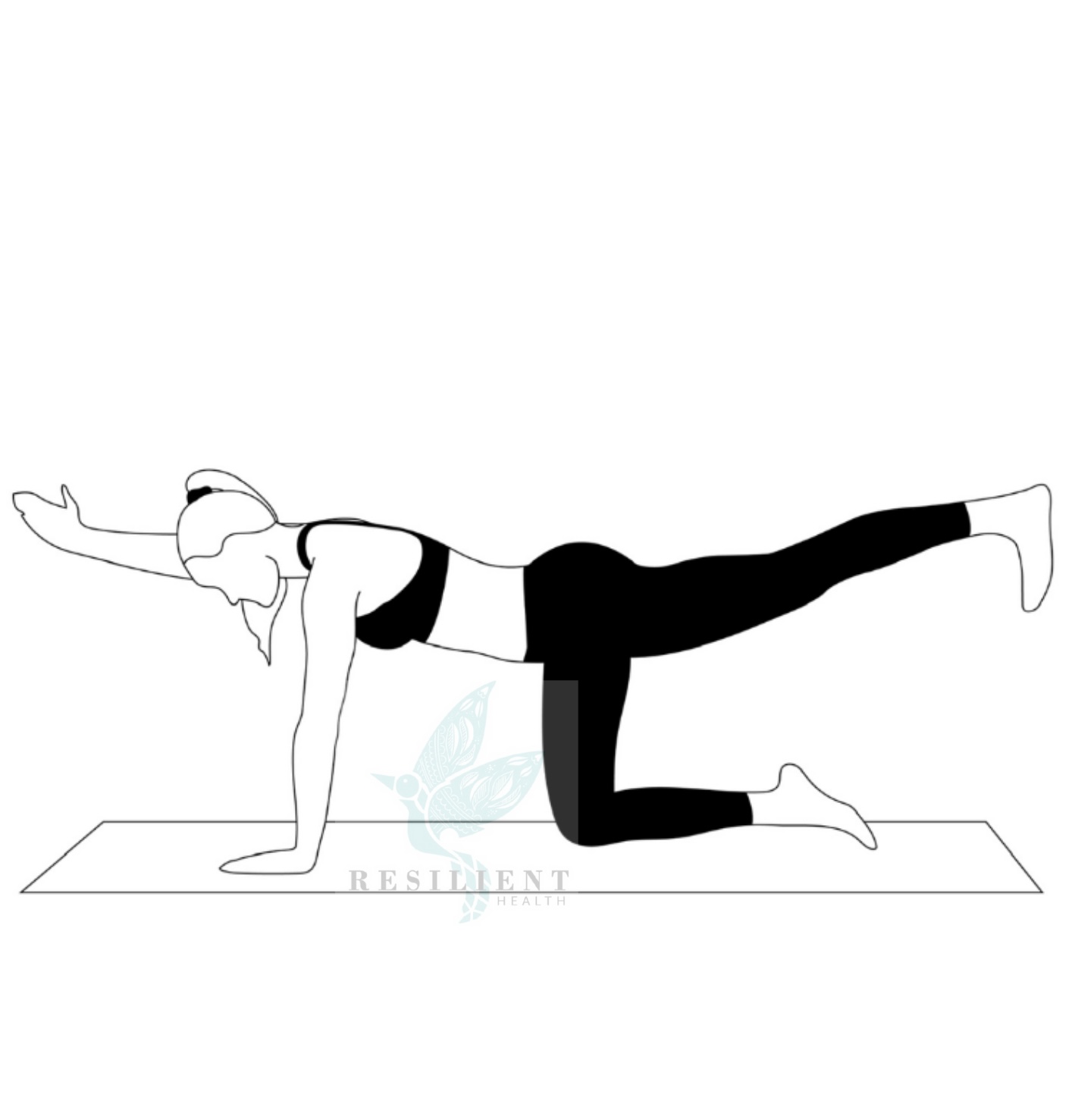
Abdominal muscles
Connection of your front body: If you concentrate on following the yellow arrows to connect your ribcage to your pelvis, you will feel a tension connection of your front body. Using this in your everyday allows your body to incorporate a larger group of muscles in your daily tasks. This is our overall aim in using our "core", as we tend to avoid overusing or fatiguing the same muscles.
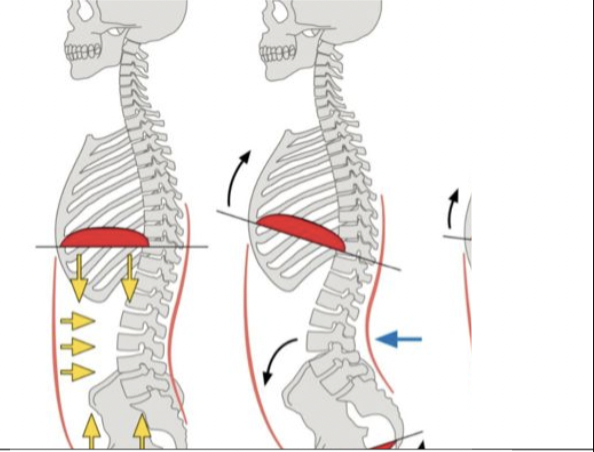
Curl up: Lay flat on your back with one leg bent and one hand under your low back (sides don’t matter). Gently lift your head and shoulders slightly off the ground, making sure your chin is tucked in and your hand isn’t getting squashed.
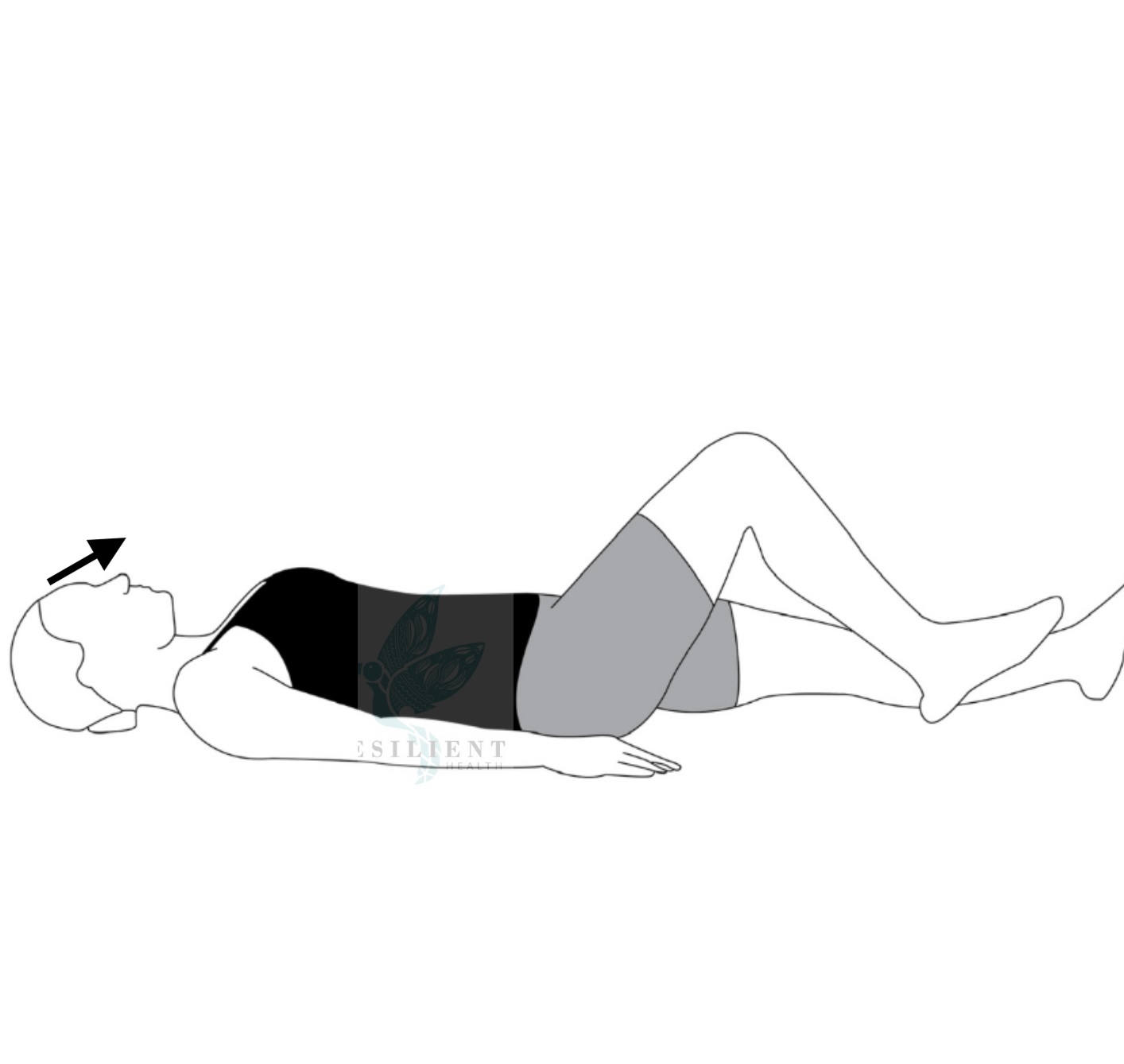
Latissimus Dorsi & side-body core muscles
Side plank: Lay on your side with your knees bent and support your upper body with your elbow. Make sure to push the ground away using your shoulder and side body, and lift your hips away from the ground.
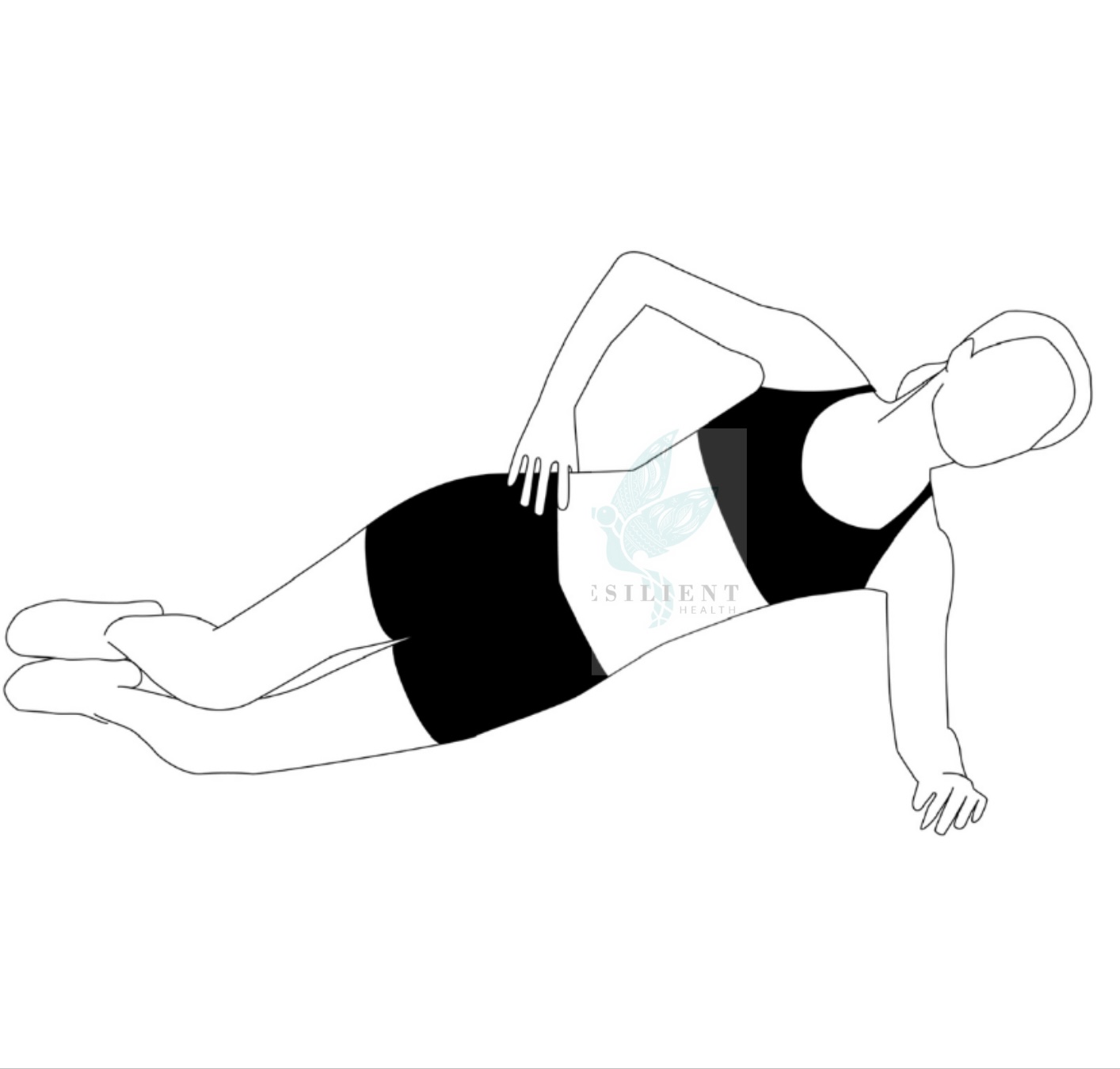
Glutes
Bridge:
Laying on your back with your feet flat on the floor, push up through your heels and lift your pelvis towards the ceiling. TIP: Avoid overarching through your back or letting your knees fall in. You can. give your bottom a poke to feel your glutes working!
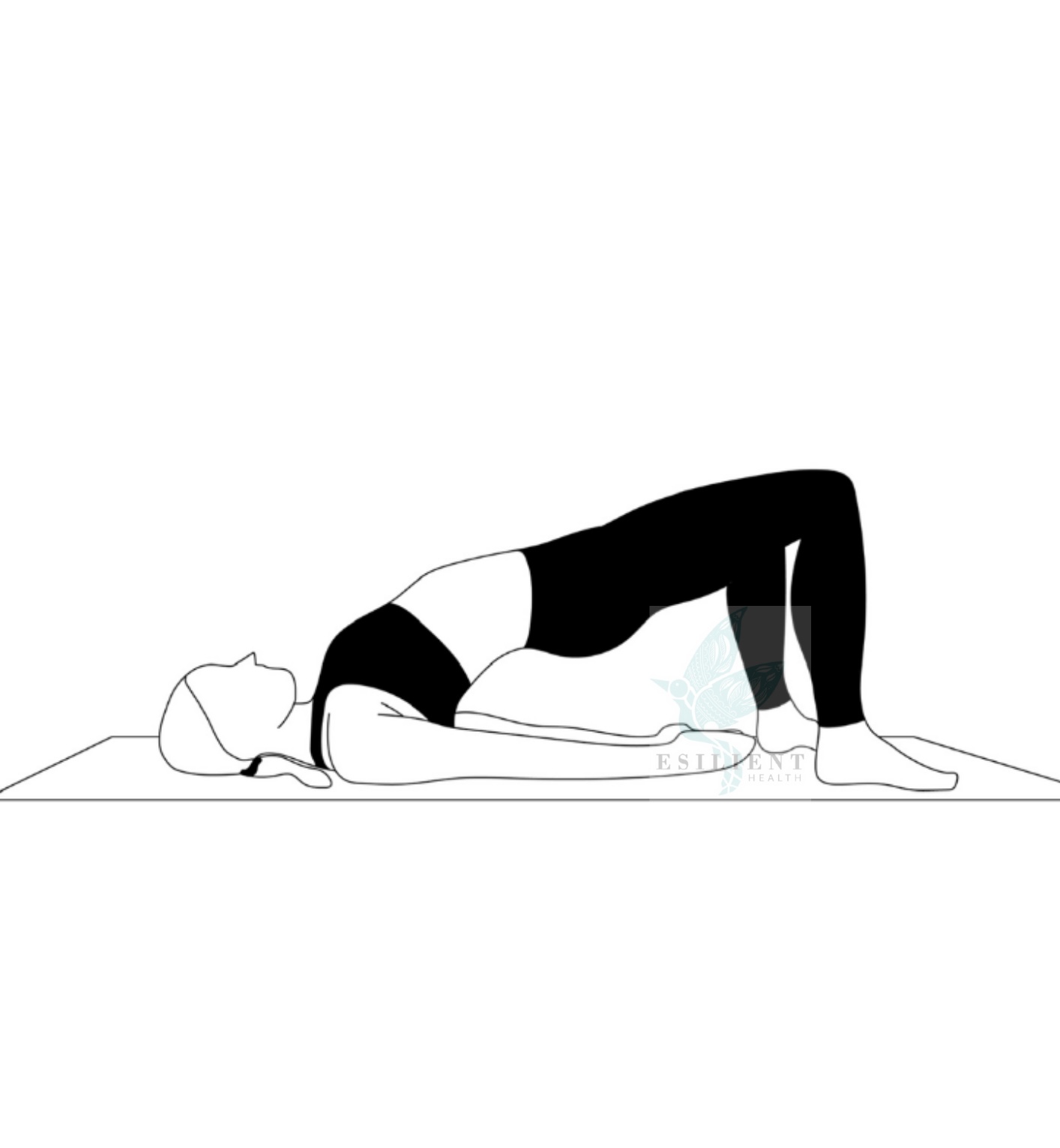
Entire core!
Dead lift: By holding a breath in, lifting your chest up, weight in your heels, shoulder blades squeezing down and together, chin gently tucked and knees tracking over your feet, the dead lift is the ultimate way to activate all of your core muscles!
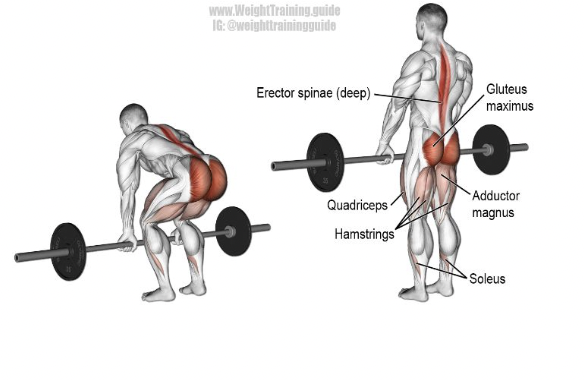
Where to from here?
Got this covered?! Apart from being present in your everyday movement you can consider including these in your fitness routine:
Flexion (forward bending or rounding of the spinal column)
Extension (backward bending of the spine)
Lateral flexion (bending sideways)
Rotational strength (ability to rotate the torso) to build a RESILIENT core. (*see what we did there?! :P)
See you in the clinic!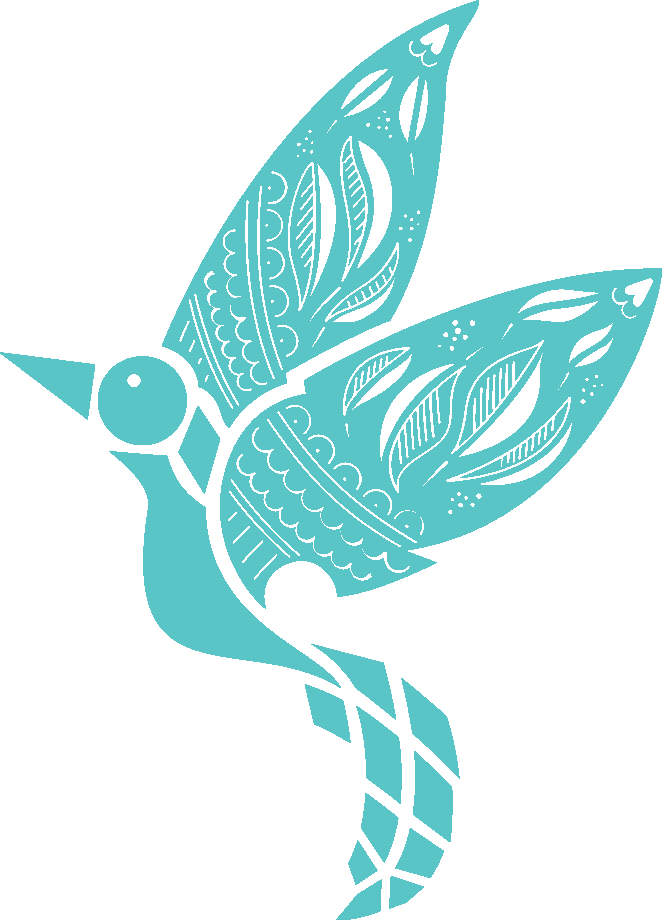
The Resilient Health Team
Images
core: https://fitpage.in/core-muscles-and-how-to-strengthen-them/
abdo bracing: https://visionexercisephysiology.com.au/perform-abdominal-bracing-correctly/
deadlift: www.weighttrainingguide.com
References:
Brown SH, Vera-Garcia FJ, McGill SM. 2006 Effects of abdominal muscle coactivation on the externally preloaded trunk: variations in motor control and its effect on spine stability. Spine. Jun 1;31(13):E387-93.
Carpenter MG, Tokuno CD, Thorstensson A, Cresswell AG. 2008 Differential control of abdominal muscles during multi-directional support-surface translations in man. Experimental Brain Research, Jul 1;188(3):445.
Childs JD, Teyhen DS, Casey PR, McCoy-Singh KA, Feldtmann AW, Wright AC, Dugan JL, Wu SS, George SZ. 2010 Effects of traditional sit-up training versus core stabilization exercises on short-term musculoskeletal injuries in US Army soldiers: a cluster randomized trial. Physical therapy. Oct 1;90(10):1404-12.
Ferreira PH, Ferreira ML, Maher CG, et al. Specific stabilisation exercise for spinal and pelvic pain: a systematic review. Aust J Physiother 2006;52:79–88.
Hibbs AE, et al 2008 Optimizing performance by improving core stability and core strength. Sports Med. 38(12):995-1008
Lederman E. 2010a The myth of core stability. Journal of bodywork and movement therapies, Jan 1;14(1):84-98.
Lederman E. 2010b Neuromuscular rehabilitation in manual and physical therapies: principles to practice. Churchill Livingstone/Elsevier. London.
Craig Liebenson (Ed.), Baltimore: Lippincott Williams & Wilkins, 2006, Rehabilitation of the Spine – A Practitioner’s Manual, 2nd Ed. J Can Chiropr Assoc. 2007 Mar; 51(1): 62.PMCID: PMC1924653
|
|
|
|
